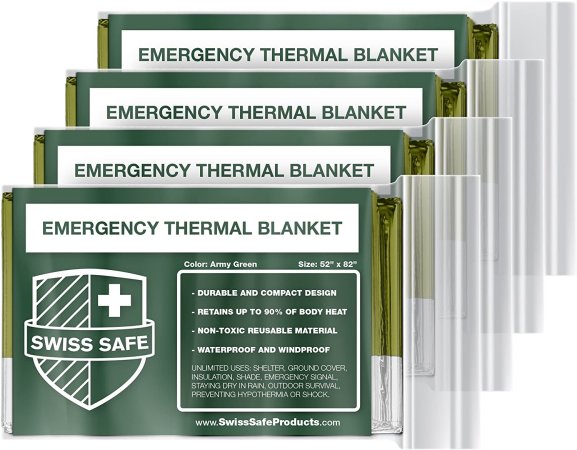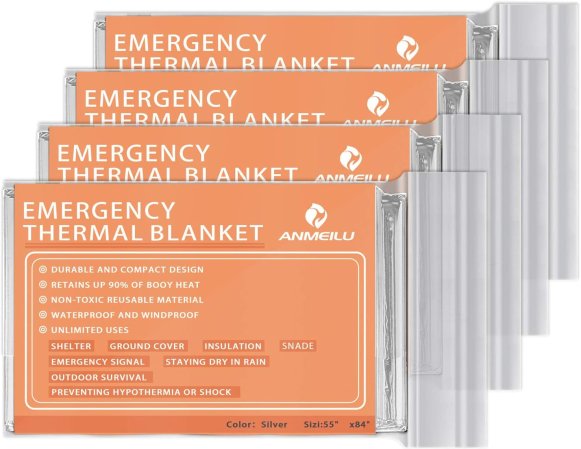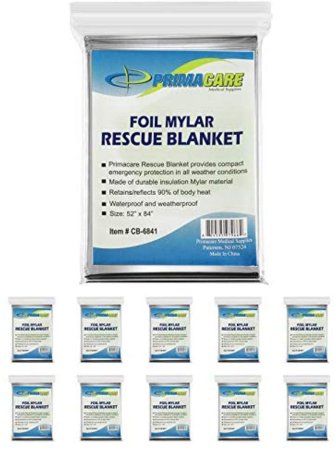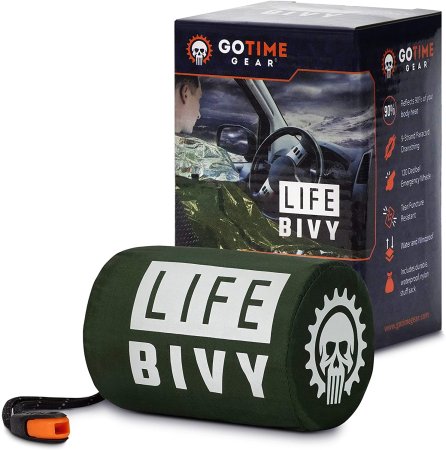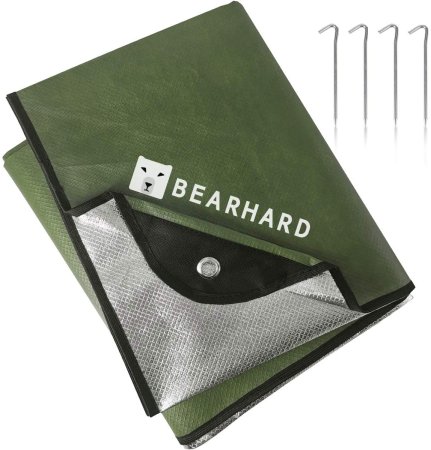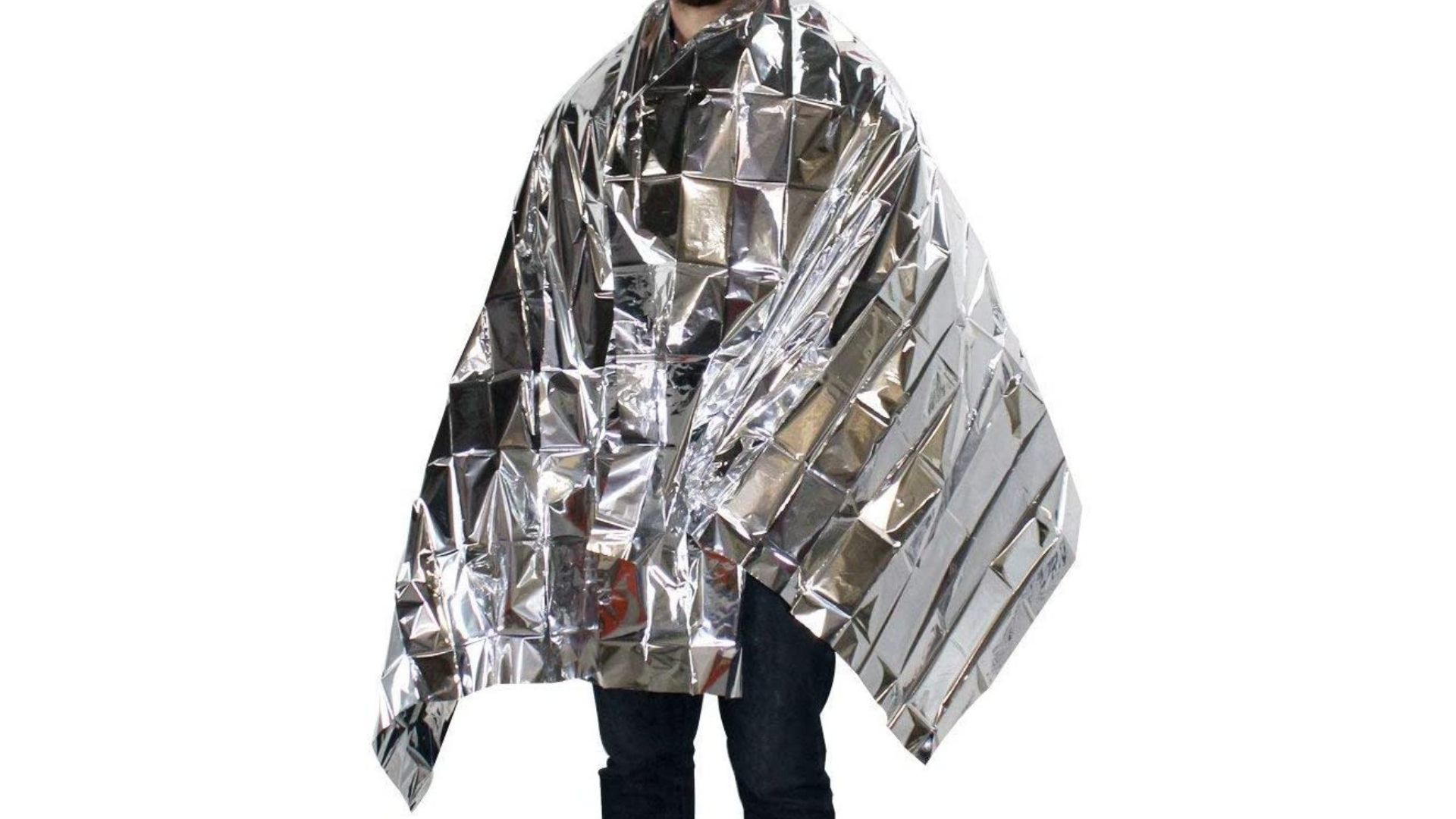

We may earn revenue from the products available on this page and participate in affiliate programs.
Every survival kit needs an emergency blanket — a versatile piece of survival gear that can prevent hypothermia and even double as a shelter. It’s one of the necessary supplies that you bring along, hoping to never have to use. Made out of reflective, thin, and durable material, these blankets are designed to keep heat in. The waterproof and sturdy nature of these blankets lets you convert them into a shelter if needed. Your next hike or camping trip is likely not going to involve Arctic warfare, but with how cold it gets at night, it might start to feel like it. If you get waylaid on your travels, a fun trek can turn into a survival situation with alarming speed. Instead of getting caught unprepared, simply tuck one of the best emergency blankets in with your gear and be ready for everything.
To help you track down a high-quality model, we’ve broken down the top options, along with some tips on making the right pick.
Swiss Safe Store Emergency Blankets
Anmeilu Emergency Thermal Blanket
Primacare HB-10 Emergency Blanket
Go Time Gear Life Emergency Sleeping Bag
Bearhard Heavy Duty Emergency Blanket
Related: 5 survival kits that won’t fail you when everything else does
Why should you trust us
I’ve been reviewing products for five years, focusing largely on tactical gear, automotive supplies, and other survival necessities. Using my educational background in the sciences and three years of experience as a news reporter, I curate fact-based reviews on which my readers have come to rely. My work is featured on The Drive, Car Bibles, and Narcity Media, and some of the most recent pieces I’ve done for Task and Purpose include reviews of thermoses, folding knives, and camo pants. All my work is done with a view to providing actionable advice for sourcing reliable products for everyday situations and survival scenarios.
The most common types of emergency blankets
Mylar blanket
This is easily the most common type of emergency blanket, originally called a space blanket. It is made out of mylar, an aluminum-based material that is lightweight yet not bulky. The blanket is designed to fold down compactly, fit well into any space, and be thoroughly waterproof. The key behind the material is to prevent natural heat loss by reflecting the energy back inwards and trapping it.
First crafted by NASA, these blankets have become one of the standards for first-aid kits. They feature a plastic coating that keeps the blanket dry and comes in a wide range of sizes (though the bigger they are, the easier they tear). A quality option will be able to reflect back anywhere from 90 to 97 percent of heat, making this type a very energy-efficient option.
Sleeping bag
Taking mylar technology to the next level, some modern emergency blankets use the metallic features of the blanket in conjunction with insulation. Keep in mind that, because of the extra material, these blankets are bulkier and moderately heavier than their mylar counterparts. In most cases, the blanket is made out of ripstop nylon.
These blankets are specifically designed for camping or hiking, meant to lend an extra level of security against the elements. In most cases, this type of emergency bag is reusable and generally more comfortable than thinner blankets. Typically, these blankets will come as a standalone.
What to look for when buying an emergency blanket
When you’re picking out your emergency blanket, there are a few important things to keep in mind. The first is considering where you are likely to use it. If you are more likely to find yourself battling a winter blizzard from your car, you’ll want something to fit in your trunk or glove compartment. Conversely, if you plan to go on a desert hike with nothing but a backpack, your emergency blanket needs to be lightweight, highly reflective, and compact.
Once you’ve settled on where you plan to store the blanket, consider the versatility and durability of the blankets you’re investigating. If you are getting only one, check that you can fold it back down after use or that the set comes with more than one blanket. Ensure that it is tough enough to withstand real-life conditions (like the models on this list). The last thing you want in a survival situation is your gear giving up on you, so make sure the blanket can keep up.
Finally, ensure that your blanket is completely waterproof. Be sure that the fabric isn’t likely to rip, because no matter how water-resistant it is, a tear will lessen the benefit. Check that the moisture is repelled along with the heat and the cold. So long as your blanket can protect you from the elements and is big enough to cover you thoroughly, it should be a great way to go.
The advantages of owning an emergency blanket
Having an emergency blanket is more than beneficial. It is utterly essential to any survival kit, bug-out bag, or prepper bunker. Emergency blankets are designed specifically for extreme conditions, often going by the phrase ‘space blankets.’ They are made out of waterproof, reflective materials that can be used to keep heat in or repel it. As a result of this aluminum-integrated textile, you can rely on a quality emergency blanket whether the sun is scorching or you’re stuck in a blizzard.
Another key advantage of an emergency blanket is that, like any other survival gear that is worth its salt, you can use it in more than one way. This isn’t just about hot versus cold. It’s the fact that your blanket can double as a jacket and be used as a shelter. Provided you plan ahead and have reasonably easy access to the blanket in an emergency, it can surely help you get through a bind.
- A compact design fits in with any type of gear, so you can fit it in your vehicle, tool kit, or bug-out bag.
- The waterproof design prevents you from getting damp, while it also stops the bag from getting damaged by moisture.
- The lightweight design stops you from getting bogged down when moving around with a backpack or other gear.
- Many emergency blankets are designed to be used more than once, so long as they are properly taken care of.
- It’s an affordable survival supply, making it easy to add the blanket to any of your other gear.
- It can repel heat when the reflective component is focused outwards, preventing heatstroke.
- It can keep heat in by focusing the metal inwards so that you can better survive colder situations.
- It works as a shelter if you are stranded without access to a proper tent or other solution.
Price ranges for emergency blankets
- Under $10: If you want an emergency blanket for your glove compartment, first aid kit, or bug-out bag, the options in this range are usually suitable. Most are made out of a thin mylar material and come with more than one in a set.
- Over $10: Emergency blankets in this price range are likely to be reusable, and include extra textiles in addition to the mylar material. These are often best-suited for camping and hiking, as well as keeping in your vehicle.
How we chose our top picks
By doing thorough research on the textiles used in emergency blankets, looking into the history of mylar blankets, and investigating the reviews of popular, proven experts, we gained a full understanding of what to expect from a quality product. From there, it was a matter of identifying durable, affordable options that are versatile enough to work as survival gear. Aiming to provide a reasonable cross-section of the options on the market, while sticking to reputable vendors, we curated a list of the best emergency blankets you can get.
